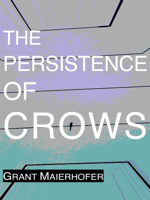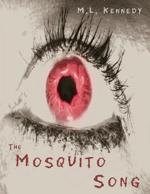As a whole, Michael Mann’s Miami Vice (2006) isn’t a particularly good movie. But then again, it isn’t a particularly bad one either.

Among Mann’s oeuvre, it probably sits somewhere around Collateral, slightly above or below, depending upon the viewer. Although named after his television series in the 80’s, it doesn’t have much to do with it outside of Colin Farrell’s retro looking hair/Fu Manchu combo and the police officers’ hedonistic lifestyles.
Like Collateral and Heat, Vice is another one of Mann’s deft crime thrillers, this one about two cops going undercover to break up a notorious drug network. As usual for a Mann film, it is very meticulously shot – much attention is paid to the details of the story such as the drug business, law enforcement protocol, weapons, and vehicles. It strives to be as realistic as possible, but at the same time pushes the limits of reality, pushes the rules of reality as far as they can go. Like Heat, it’s also an ensemble film with an expansive cast, though most of the focus is on the Colin Farrell character, Sonny.
Unfortunately, the problem with focusing on too much detail and stretching yourself thin with too many characters is that you risk losing focus on the story and losing depth on the characters and relationships between them (unless you fear not the wrath of studios for breaking their unspoken feature film running time limits). And like Heat, Vice skims over the plot, as if it were an obstacle getting in the way of the technical details and pure visuals that Mann loves so much.
A novice Mann viewer would easily become lost in the indecipherable mutterings of the characters that attempt to reflect dialogue in the real world, but are the only lifelines for those viewers in their misguided instinct to string together a story.
Along similar lines, characters are not developed to maturity. They seem to develop a potential of pulling our sympathy, taking us with them into the story, but just as soon as that happens, the audience is cut off, sent back into the chaotic action. The film is constantly globetrotting from one place to another, as the film takes place over a wide expanse of geography. It seems to be too much, with not enough time spent on each locale.
This has the most detrimental effect on the central relationship between Sonny and the drug lord played by Gong Li. Intimate moments are often glossed over quickly and not meditated upon, and the roughness with which they are edited in make it seem like they were inserted more out of obligation than by desire. The overall effect is the reduction of the relationship to a stereotype.
Sadly, this is symptomatic of other Mann films. The women often become the used and abused, the helpless and exploited that are at the mercy of others. It’s almost misogynistic in its pattern across some of Mann’s films. Here, with the casting of Gong Li, the stereotype threatens to become more insidious as her relationship with Sonny and her boss casts the shadow of the Dragon Lady.
All that being said, the film is redeemed with those very things that the aforementioned were sacrificed for, the very things that define a Mann film – the pure visuals that exude the love that Mann put into them.
The gunfight set pieces are carefully constructed with attention to details so small such as how the blood will splatter or how the violent flashes will flare from the gun barrel. The scenes of transit are pushed to the extremes of credibility just for Mann to be able to paint his magnificent visions. For example, the police somehow can afford to cruise in a Ferrari through the night, but this allows for a breathtaking transition scene in which the cops are trying to get to a witness on time, slicing through traffic with an easy gracefulness.
We see how Mann pushes this to the limits. The police are taken on international journeys which provides for an exhilarating ride through the air on private jets that seem to be shot not from another airplane but from a standstill position in the sky.
The police also travel over the water on powerful jet boats that seem to glide over the water but whose violent wake reveal the force that pushes it into the broad horizon. The excessiveness of the Miami culture oozes through the screen, but the audience is left marvelling at the adventure that they’re being taken on.
But as any initiate of Mann’s signature style knows, the real beauty of his films lie in his portrayal of the sprawling urban metropolis at night. Many action sequences take place then, against the backdrop of a dense urban environment. The sparse lighting creates dramatic shadows, heightened by the harsh glares from the neon lights that decorate some signs or storefronts or the light streaks from a car’s headlights.
These are consciously used to add emotion to certain scenes. For example, when Gong Li is being driven away from the dark, her black vehicle disappears. As Sonny is looking for her, the vehicle’s window rolls down, revealing a bright yellow interior that creates a glow around Gong Li’s face. This light highlights her face, as the rest of the vehicle disappears in the dark. This scene vividly describes the growing attraction that Sonny feels for her.

Often for the setting of many scenes (and here I am referring to Mann’s other films as well) Mann utilizes the illuminated skylines and the glittering grid of the city streets that stretches out into the far distance. This is used for crucial scenes as often as trivial scenes such as ones in which a character is just talking on the phone.
As unimportant as a scene may be, the shimmering quality of the city at night in these scenes almost gives the background a presence of its own. The care with which Mann handles these scenes are visible – while seemingly using regular film in the day, he chooses digital cameras to better capture the light from this background at night.
Sometimes the backdrop is so grand that it almost seems to overwhelm everything else. One pays attention not to the foreground action and characters, but strictly meditates upon the broad canvas of the background. This effect is usually enhanced by an ambient soundtrack. The use of negative space here allows the telling of a parallel story, separate than that of the drama in the foreground, and more important.
The overall result is the creation of an atmosphere, a mood that seems to be asserting a feeling or a certain awareness that these characters in the foreground and the action of the story are only a speck, one part of this vast city and world. One is left to amaze over the fact that characters as different as these can be produced in such a vast world and that there are events such as the ones portrayed in the film that cause these characters to coincidentally cross paths, and become significant, if only for the moment in which we view them.
In their struggle, there will be moments shown in which the characters themselves reflect upon that broad canvas of the night at the same time that we do, and at that intersecting moment their humanity is revealed as we share in their understanding of the great expanse of the city and the insignificance of their (and our) situation in the big picture. At that moment, there is a shared humility.
However, that moment is brief. Once the scene is over, the action of the next one quickly moves in to fill the void, and the characters disappear in the scramble of the story. And once the film is over, all of the characters, after having connected in some significant way, retreat back into that incandescent night, into the background, one among the many once more.
One wonders what will happen to them and what will happen next. Will they meet again? Will there be different characters coming to the foreground? There is a certain grandeur in the mystery of it all. And it is this particular sensation that helps Mann’s films transcend the confines of the crime genre that he works in.








